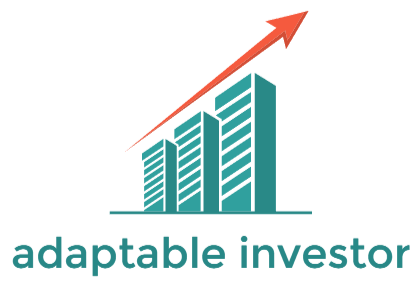Summary: Investors in KBR, Inc. (NYSE: KBR) with losses over $100,000 are being alerted to a class action lawsuit, with a lead plaintiff filing deadline of November 18, 2025 ([1]). The lawsuit alleges KBR misled shareholders about a major military logistics contract that was terminated, causing a sharp stock drop ([2]). Below we examine KBR’s dividend policy, financial leverage, valuation, and the key risks and questions facing the company in light of recent events.
Company Overview
KBR is a global provider of science, technology, and engineering solutions serving government and industrial clients. It operates through two main segments: Mission Technology Solutions (MTS) – focused on government services like defense, space, and logistics, and Sustainable Technology Solutions (STS) – providing technologies and advisory services in energy and chemical markets ([3]). KBR’s government segment has historically driven a large portion of revenue, including a now-terminated Global Household Goods moving contract for the U.S. Department of Defense. That contract (valued up to $20 billion over 9 years) was awarded to HomeSafe Alliance, a joint venture led by KBR ([2]). In May 2025, KBR’s management had touted the HomeSafe program as on track (calling the partnership “strong” with an “excellent” relationship) ([2]). However, on June 19, 2025, HomeSafe announced that U.S. Transportation Command terminated the contract for cause due to performance issues ([2]). Following this news, KBR’s stock price fell over 7% in a single day ([2]). This development not only spurred litigation but also removed a significant anticipated revenue stream from KBR’s future backlog.
Dividend Policy & Shareholder Returns
KBR pays a quarterly cash dividend that has been growing in recent years. The current dividend is $0.165 per share quarterly (raised from $0.15 in early 2025) ([4]). This equates to an annualized payout of $0.66 per share, yielding roughly 1.3% at recent share prices ([3]). KBR’s dividend track record shows steady increases (for example, it was $0.135 per quarter in 2023 before rising to $0.15, and then $0.165 in 2025). The payout ratio is conservative – on anticipated 2024 earnings of around $3.00 per share, the dividend represents only ~22% of earnings, leaving ample buffer. In dollar terms, dividends consumed about $22 million in the first quarter of 2025 ([4]), well covered by the quarter’s earnings and operating cash flow. In addition to dividends, KBR returns capital via share buybacks. The company repurchased roughly $156 million of its stock in Q1 2025 ([4]) (including substantial buybacks to settle convertible note warrants without dilution), far exceeding the dividend outlay. This suggests management’s shareholder return focus currently leans more on opportunistic buybacks while maintaining a modest, growing dividend for income investors. Overall, KBR’s dividend appears well-supported and has room to grow, though investors will watch if any large cash needs (from legal actions or strategic changes) affect this policy.
Leverage, Debt Maturities & Coverage
KBR carries a moderate debt load from past acquisitions and financing needs. As of mid-2024, total debt was about $1.92 billion against ~$414 million in cash ([5]) ([5]), for a net debt of roughly $1.5 billion. This net debt is about 1.8× KBR’s annual EBITDA (estimated ~$830 million for 2024), a manageable leverage level. The company refinanced and extended its debt maturities in early 2024, pushing out any major repayment cliffs. Its Term Loan B (recently upsized to $1 billion) now matures in January 2031 ([5]). The Term Loan A tranches and revolving credit facility mature in February 2029 after amendments, and a smaller Term Loan A-2 matures in August 2027 ([4]). KBR also has $250 million of 4.75% senior unsecured notes due 2028 ([5]). Near-term debt amortization is modest – for example, Term Loan A requires small quarterly payments (0.625% of principal) and Term Loan B requires $3 million quarterly ([4]). The company’s interest coverage appears healthy: even with rising rates, KBR’s EBITDA-to-interest expense comfortably exceeds the 3.0× minimum set by debt covenants ([4]) (interest coverage was well above 5× as of 2024 given ~$120 million annual interest versus ~$600+ million EBIT). KBR has been in compliance with all debt covenants ([4]). The cost of debt is partly shielded by interest rate swaps converting a portion of floating-rate loans to fixed ([5]) ([5]), limiting exposure to further rate hikes. Overall, KBR’s balance sheet leverage is reasonable for its cash flow profile, and recent refinancings have staggered maturities out to 2027–2031, reducing refinancing risk ([4]). Barring unexpected setbacks, the company has flexibility to service debt (net leverage is targeted under 4.0× per covenants) and continue investing in growth and shareholder returns.
Valuation and Performance Metrics
At the current stock price, KBR’s valuation appears modest relative to peers. The shares trade around 13–15× earnings, which is a discount to many engineering and government-services peers (for context, AECOM trades near ~24× and Fluor ~19× earnings) ([6]). KBR’s EV/EBITDA multiple is roughly 9× based on enterprise value (~$7.5 billion including debt) and 2024 EBITDA guidance, again on the lower end of the sector. This lower valuation may reflect concerns over recent events and KBR’s growth outlook. However, the company’s underlying performance has been solid. In the first half of 2025, revenue grew 8% year-on-year to $4.0 billion, with Adjusted EBITDA up 16% and a 12.3% EBITDA margin ([7]). Adjusted EPS for the first six months was $1.91 (20% growth) ([7]), putting KBR on pace for roughly $3.10–$3.30 in full-year adjusted EPS (in line with its prior guidance ([8])). Following the HomeSafe contract loss and other headwinds, management did trim 2025 revenue guidance to ~$7.9–8.1 billion (from ~$8.7–9.1 billion previously) ([7]) – about a 10% cut. Notably, 2025 adjusted EBITDA guidance was maintained around $960–$980 million, essentially unchanged at the midpoint despite lower revenue ([7]). This implies KBR expects to preserve profitability, perhaps because the lost revenue was lower-margin or offset by cost adjustments. In fact, KBR updated its long-term outlook and still anticipates 2027 EBITDA of ~$1.15 billion, the same as prior targets, even though projected 2027 revenue was slashed to $9.0 billion+ from a previous $11.5 billion+ ([7]). The company is effectively saying it can achieve similar earnings with a leaner revenue base by focusing on higher-margin work (reflected in a raised margin target of 11%+ by 2027) ([7]). If these margin improvements materialize, KBR’s low valuation could prove overly pessimistic. Still, investors may remain cautious until there is more clarity on growth replacement for the lost contract and the outcome of current challenges.
Risks, Red Flags, and Open Questions
– Class Action Lawsuit: The recently filed securities class action is a key overhang. Investors allege that KBR misled the market about the status of the HomeSafe contract – despite internal warnings of problems, management reassured that “the program [was] successful” and they were “very confident in [its] future” ([2]). When the truth emerged with the contract termination, shareholders suffered losses ([2]). The lead plaintiff deadline of November 18, 2025 is approaching ([1]). While such lawsuits often take years and may settle via insurers, the outcome is uncertain. Potential damages or a settlement could cost KBR money and management attention, and the allegations raise governance and transparency concerns. Investors will watch for any SEC inquiries or internal repercussions (e.g. changes in disclosure practices or leadership) stemming from this issue.
G
The Golden Anomaly — explained
Tap to expand for Buffett's probable target + 4 small miners with 10–100x potential
– Contract Termination & Business Impact: The loss of the massive DoD Household Goods contract is a significant setback. Termination “for cause” not only erases up to $20 billion of potential revenue ([2]) but could tarnish KBR’s reputation with the U.S. military – a critical customer. It’s unclear if KBR will have an opportunity to re-bid or win back this work in the future; near-term, a competitor may take over the program. The company’s backlog and growth forecasts have been revised down as a direct result (e.g. 2027 revenue target cut ~22%) ([7]). There is a risk that this incident signals execution issues in KBR’s project management. It may also make government agencies more cautious in awarding KBR new large-scale contracts until performance credibility is re-established. Management’s ability to prevent similar missteps and successfully deliver on other key programs (for example, KBR’s work for NASA, defense, or energy clients) is an area of investor scrutiny going forward.
– Leverage and Financial Flexibility: While KBR’s current leverage is reasonable, its debt is substantial at ~$1.9 B. A portion of the loans are floating-rate; further interest rate rises could increase interest costs (the company estimates +50 bps would add ~$2 million in annual interest expense net of hedges) ([5]). If business performance were to falter, leverage could tick up and constrain KBR’s strategic flexibility. The company plans to spin off the MTS segment (government services) by mid-to-late 2026 in a tax-free deal ([9]). This upcoming separation raises questions on how debt will be allocated between “New KBR” (presumably the STS business) and the spun-off MTS. Post spin, each entity will need appropriate capital structures – investors will want to see that neither company is overburdened with debt or pension liabilities. Any misstep in executing the separation (delays, high one-time costs, or loss of synergies) is a risk to watch as 2026 approaches.
– Open Questions: Looking ahead, several uncertainties remain. Will KBR replace the lost revenue from HomeSafe through new contract wins or expansion in other areas (such as space, intelligence, or energy projects)? Can the company sustain its profit margins as forecast, despite slower top-line growth? How will the market value KBR’s two businesses after the planned spin-off – will the sum of parts unlock value or could it expose one segment to a lower valuation? Additionally, the outcome of the class action suit (or any regulatory action) is an open question: a large settlement or admission of wrongdoing could affect financials or reputation. Finally, from a shareholder perspective, will KBR maintain its current dividend and buyback strategy through these transitions? Investors will be watching the upcoming Q3 earnings call (scheduled for Oct. 30, 2025) for any updates on guidance, legal matters, and spin-off progress ([10]). The answers to these questions will shape whether KBR can regain investor confidence after this tumultuous period.
Sources: KBR SEC filings, investor presentations, and press releases; U.S. SEC lawsuit notices; KBR’s class action press releases; and financial data from market sources as cited. The analysis above is grounded in information from KBR’s official reports and credible news outlets to ensure accuracy and context ([3]) ([4]).
Sources
- https://prnewswire.com/news-releases/kbr-investors-have-opportunity-to-lead-kbr-inc-securities-fraud-lawsuit-first-filed-by-the-rosen-law-firm-302580948.html
- https://prnewswire.com/news-releases/kbr-inc-kbr-shares-sharply-declined-amid-transcom-contract-termination-hagens-berman-302498581.html
- https://macrotrends.net/stocks/charts/KBR/kbr/dividend-yield-history
- https://sec.gov/Archives/edgar/data/1357615/000135761525000031/kbr-20250404.htm
- https://sec.gov/Archives/edgar/data/1357615/000135761524000044/kbr-20240628.htm
- https://macrotrends.net/stocks/charts/ALFVY/alfa-laval-ab/dividend-yield-history
- https://globenewswire.com/de/news-release/2025/07/31/3124768/0/en/KBR-Reports-Second-Quarter-Fiscal-2025-Results.html
- https://investors.kbr.com/news-and-events/news/news-details/2024/KBR-Announces-Fourth-Quarter-and-Fiscal-2023-Financial-Results-Issues-Fiscal-2024-Guidance/default.aspx
- https://globenewswire.com/news-release/2025/09/24/3155283/0/en/KBR-Announces-Strategic-Intent-to-Spin-Off-Mission-Technology-Solutions.html
- https://globenewswire.com/news-release/2025/06/20/3102604/0/en/KBR-Announcement-on-HomeSafe-Alliance-Global-Household-Goods-Contract.html
For informational purposes only; not investment advice.

